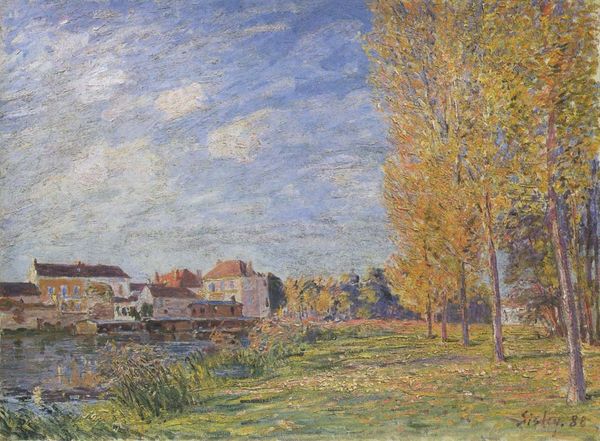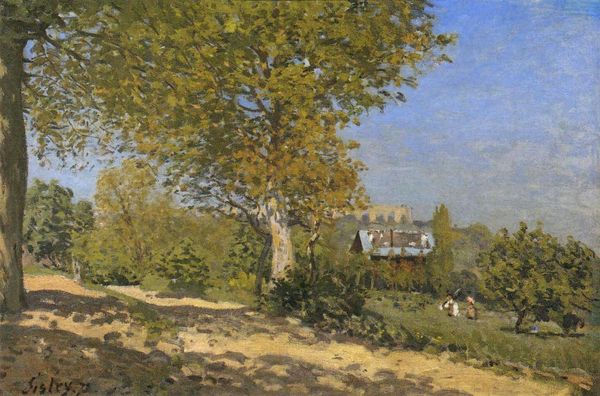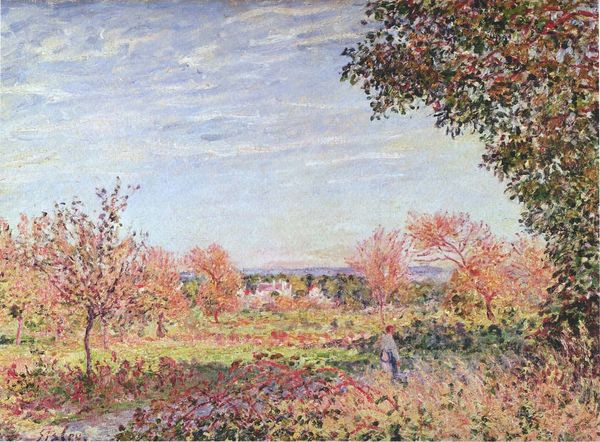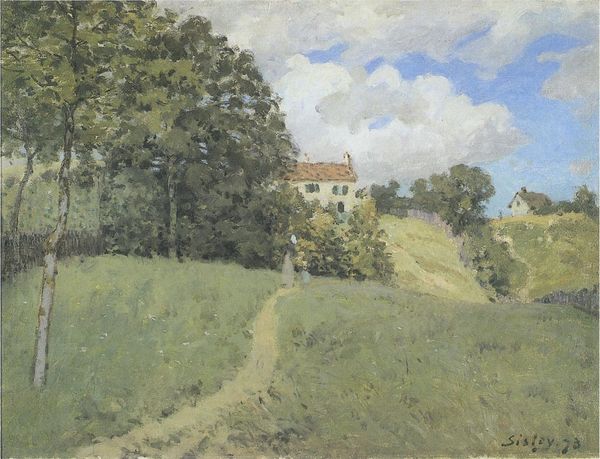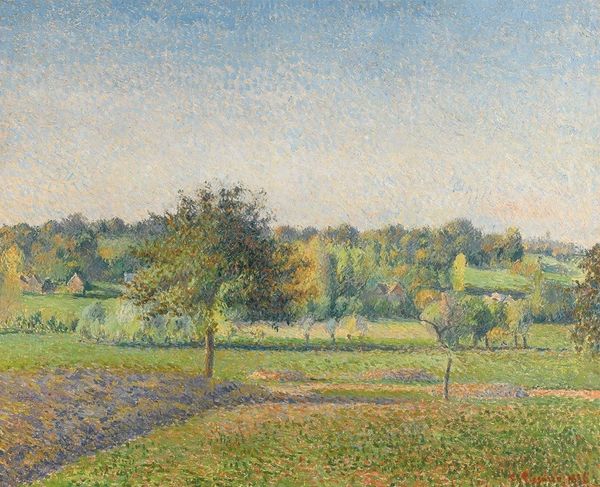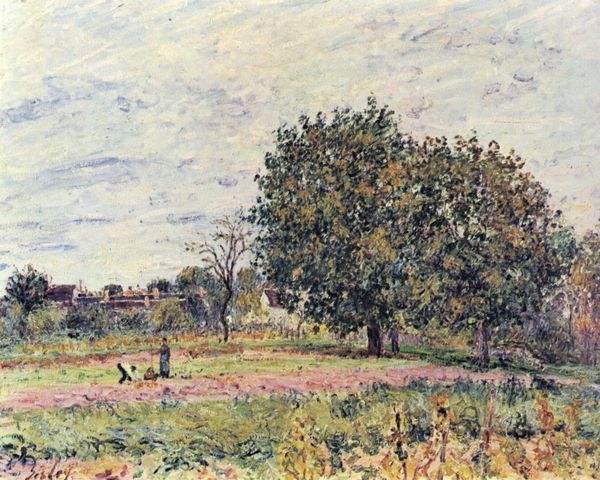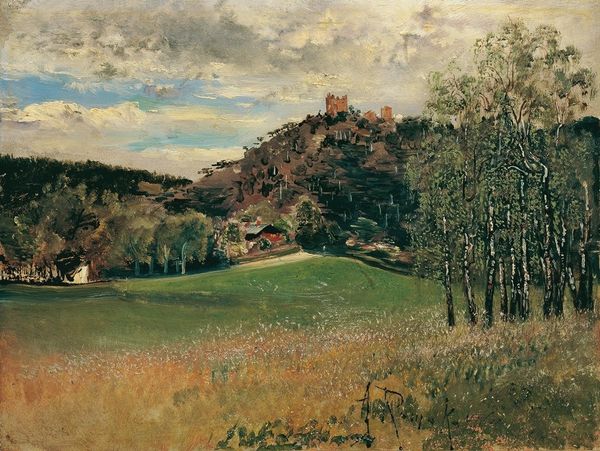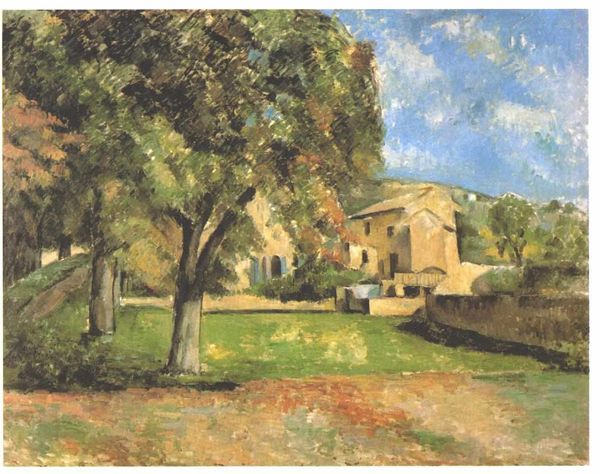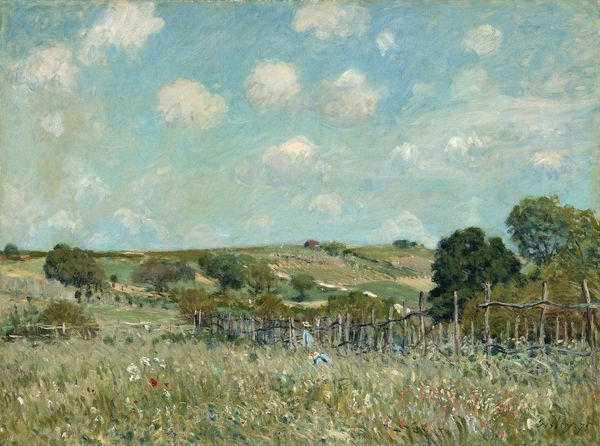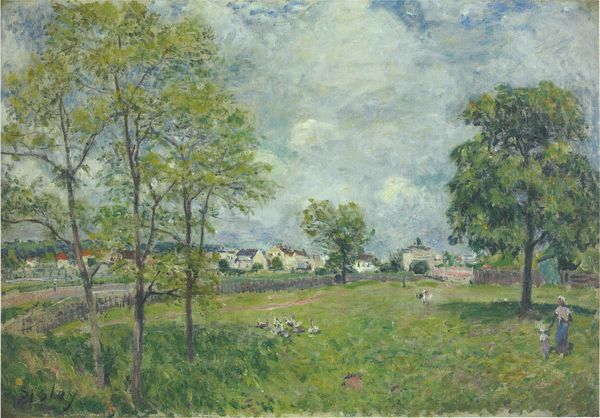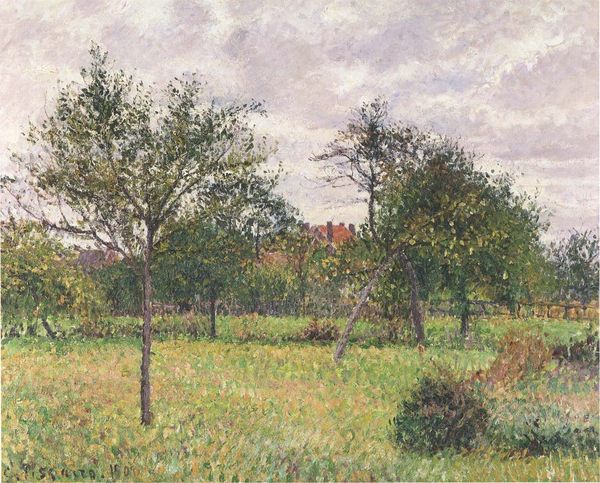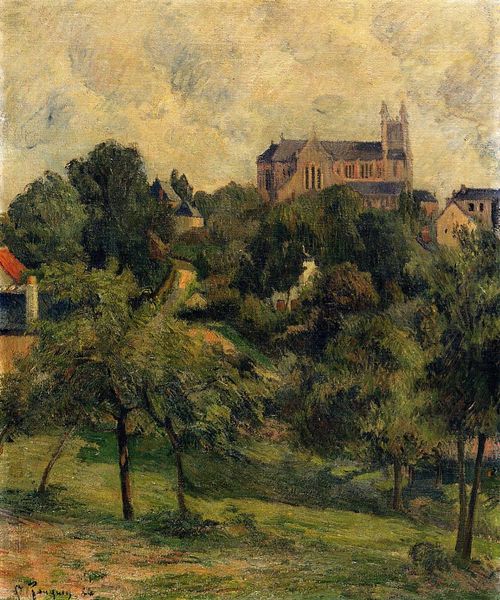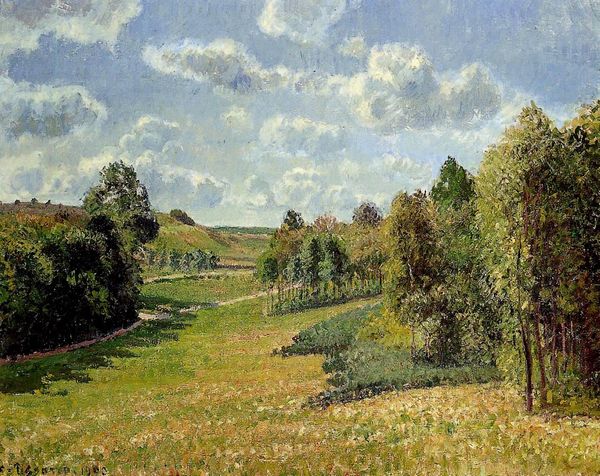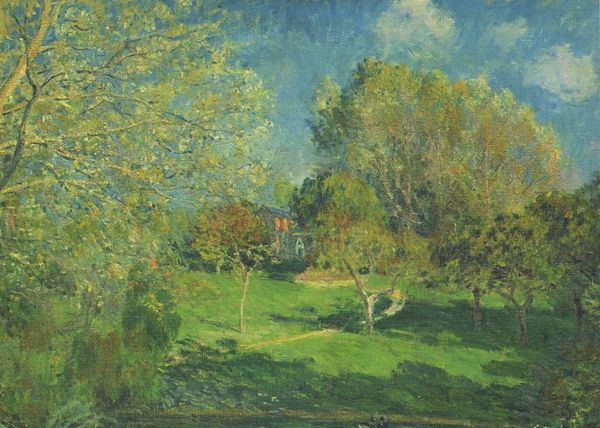
painting, plein-air, oil-paint
#
painting
#
impressionism
#
plein-air
#
oil-paint
#
landscape
#
impressionist landscape
#
oil painting
#
cityscape
#
academic-art
Dimensions: 45.7 x 61 cm
Copyright: Public domain
Curator: Alfred Sisley’s “Church at Noisy Le Roi in Autumn,” completed in 1874, offers a fascinating glimpse into the development of Impressionism through its treatment of light, color, and everyday life in rural France. Editor: The painting immediately strikes me as serene. The muted tones and loose brushstrokes create a tranquil atmosphere, almost melancholic, as if capturing a fleeting moment of autumnal peace. Curator: Indeed. Sisley was deeply interested in portraying the transience of nature and light. His choice to depict this specific church also situates the painting within broader discussions about the role of religion and community in the 19th-century French countryside. How do you read the formal composition of the work? Editor: I find the structure to be quite balanced, actually. The eye is drawn from the foreground field, over the fence, into the central arrangement of trees and town buildings with that prominent steeple. Notice how the sky mirrors the planes in the foreground? Sisley clearly understood how to harmonize open spaces with the compact details of town life. Curator: The two figures add an element of everyday experience into what is not just scenery. It speaks of land use, social connection and belonging in relation to faith. Furthermore, in that era there was plenty of push-back to industrial development which provides political undertones to the piece. Editor: Interesting. I can appreciate that read, though I'm also fascinated by the way he contrasts the rough textures of the foliage with the smoother surfaces of the buildings and the sky. The materiality itself communicates contrast. Curator: That contrast serves a sociopolitical commentary here: it signifies not only beauty but also the economic tensions of the French peasantry amidst rapid urban expansion and questions of land ownership and traditional value systems. Editor: I hadn't considered that perspective, but now looking more closely I recognize how the placement and execution really emphasizes that separation between the lived experience on land and an existing architectural symbol within Sisley's painting. Curator: I think what Sisley does brilliantly is integrate those deeper layers into the surface, asking us to reflect on how these tensions inform and shape identity in his period. Editor: Well, on reflection, I see those points interwoven beautifully through both the form and historical circumstances. Thanks, that was revealing.
Comments
No comments
Be the first to comment and join the conversation on the ultimate creative platform.
